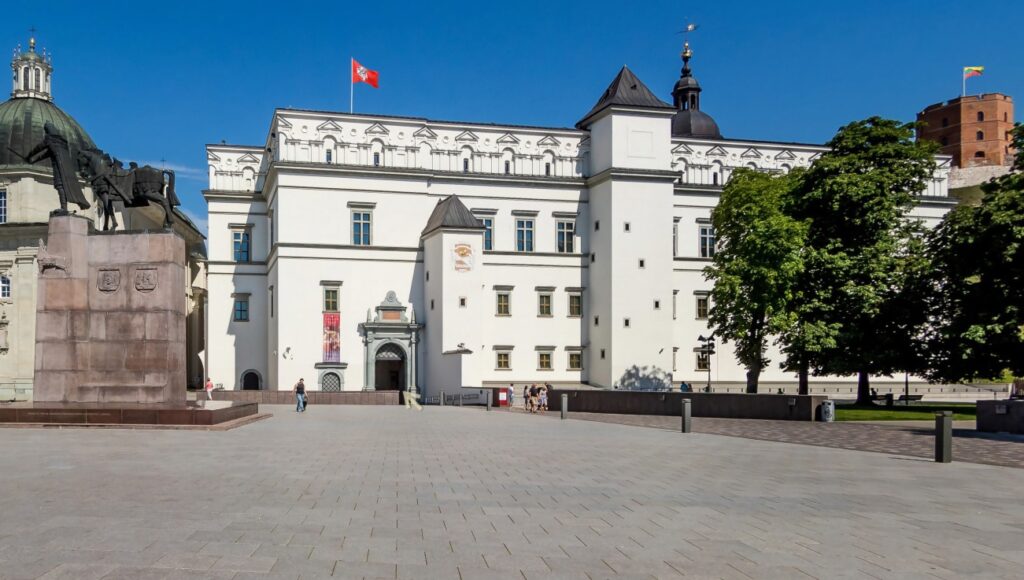Russian Orthodox Churches in Vilnius

I counted about 8 Russian Orthodox Churches in Vilnius. They are opened for people.
RUSSIAN ORTHODOX CHURCH of ST.MICHAEL

The church (Didžioji St.12, Vilnius) was built in 1514 by the great hetman of the Grand Duchy Constantine Ostrogsky.
In 1609-1827 it belonged to the Uniates. In the 18th century fires destroyed the old Gothic church. It was reconstructed in the late Baroque style, with the participation of architect Jan Krzysztof Glaubitz.
While implementing the tsarist Russification program it was reconstructed in the Russian Byzantine style in 1863-69. At that time a house that separated the church from the street was pulled down.
The walls of the church are built in the Gothic manner. The facade and the interior has numerous Gothic details.
Nearby stands a house in which a famous Russian actor Vasily Kachalov was born in 1875.
ORTHODOX CHURCH of THE BLESSED MOTHER of GOD

This Russian Orhtodox church (Maironio St.14) stands close to the ensemble of the Churches of St.Anne and Bernardines. Its cube-like volume and cupola dominate in the valley.
According to tradition, it was endowed by Juliana, Algirdas’ wife and Jogaila’s mother, who was buried there. In 1415 the church was transformed into a cathedral. In 1609 the cathedral was given to the Uniates.
In 1808 the desolated church housed an anatomy showroom, a library, lecture rooms, and a museum. In 1865-68 architects Alexander Riazanov and Nikolaj Chagin rendered it its present appearance.
Fragments of Gothic masonry have survived in the bottom part and in some segments up to the top. The present facades and the cupola imitate Georgian mediaeval architecture.
ORTHODOX CHURCH of the APPARITION of the HOLY MOTHER of GOD
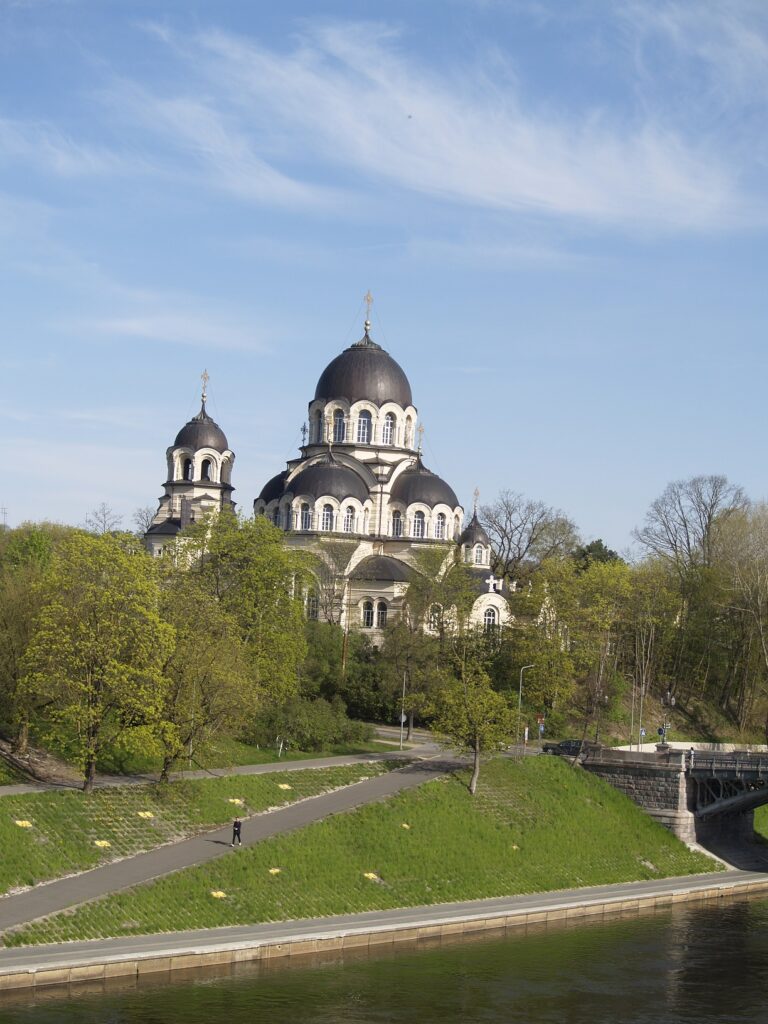
Built in 1903 and topped with several beautiful Neo-Byzantine cupolas, this is one of the best-loved Russian Orthodox churches in Vilnius (Vytauto St.21).
Cornerstone had been laid in 1899. The church was completed in 1903, and consecreted 1 June 1903. The Byzantine architectural style is rounded, and not only the top, but also curves laterally.
The exterior, which from a distance appears to be gray, is in fact yellow brick. Multiple recessed horizontal layered, giving the shadow-effect of stripes. There are frequent round stone columns, three to five feet high, supporting arches. The foundation is gray granite block. The roof, including domes, is of silver-colour metal diamond-shaped panels.
Especially interestingly is that the front facade, with forward central bell tower entry, is narrower than the sides.
The building and surrounding gardens are enclosed by a silver-gray wrought-iron fence and front gates, all supported at seven foot intervals by masonry columns.
RUSSIAN ORTHODOX CHURCH of St.MICHAEL and St.CONSTANTINE

The Orthodox Church of St. Michael and St. Constantine is a Russian Orthodox church in Lithuania (J.Basanavičiaus St.27, Vilnius) was built in 1913.
It was built by I. Kolesnikov, and incorporates the Rostov and Suzdal architectural styles.
On its consecration day of May 13, the church was visited by the former royal figure Grand-Duchess Elizabeth Feodorovna, known at the time of consecration as “Sister Elizaveta”, now a martyr within the Russian Orthodox Church.
RUSSIAN ORTHODOX CHURCH of ST.PARASKEVA

The Russian Orthodox Church of St.Paraskeva (Didžioji St.2, Vilnius) stands on a triangular square where Pilies St. turns into Didžioji St.
According to tradition, a church was built on the site of a pagan sanctuary of god Ragutis in 1345. It burned down, and was replaced by a brick church in the late 16th century. In 1611 the church and adjacent buildings with an asylum were given to the Uniates.
Documents testify that the church was turned into an inn, and the asylum – into a brothel. The church stayed abandoned till 1698, when the restoration works began.
In 1705 and 1708 tsar Peter I visited the renovated church and honoured it by donating flags. Probably because of this great attention to a small church a rumour spread that in 1705 Peter I baptized the forefather of Alexander Pushkin in this church.
RUSSIAN ORTHODOX CHURCH of the HOLY SPIRIT
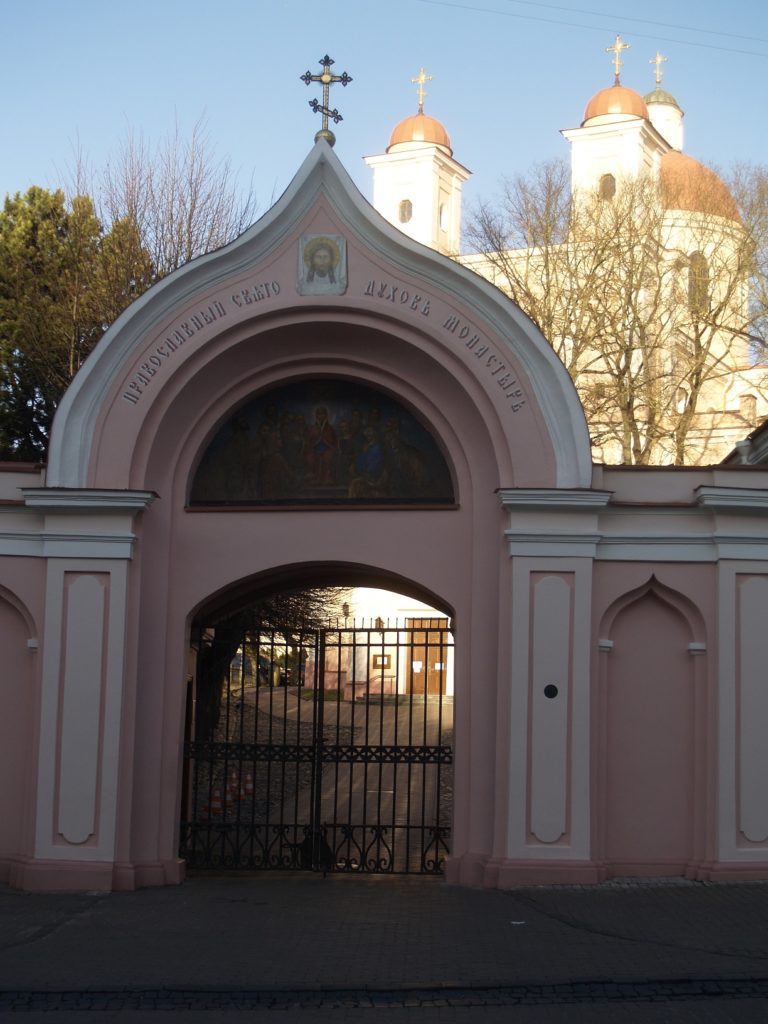
A Russian Orthodox church and monastery (Aušros Vartų St.10) have been operating on this site since 1567. A wooden church was built in 1638; it was reconstructed and decorated in the rococo style by Jan Krzysztof Glaubitz in 1749-53. The church is interesting as an example of Vilnius Baroque, being the only Russian Orthodox sanctuary of this type in Lithuania. Its serene symmetrical appearance with twin early Baroque towers and high (49 m) cupola is supplemented by a plain massive belfry.
The interior is noted for an abundant 18th century decor: a typical wooden iconostasis is reminiscent of a Catholic altar. The plan of the church is also Catholic-style, in the form of the Latin cross. The church holds 12 paintings by Ivan Trutnev.
In 1826-51 an underground crypt with the remains of the Orthodox saints John, Eustatius and Anthony was erected. In 1997 the reliquary with the remains of the saints was moved into the church. The feast day of the restoration of the relics is celebrated each year on June 26. They returned on that day in 1946 from Moscow, where they had been safeguarded from the war since 1915. They ultimately ended up in a museum of atheism.
The church acquired its present appearance after a reconstruction in 1873 initiated by Muravyov: the cupola was rebuilt, and the facade was transformed by pulling down volutes and a curving pediment between the towers. A late Baroque belfry was rebuilt in the Classical style.
RUSSIAN ORTHODOX CHURCH of ST.MICHAEL the ARCHANGEL
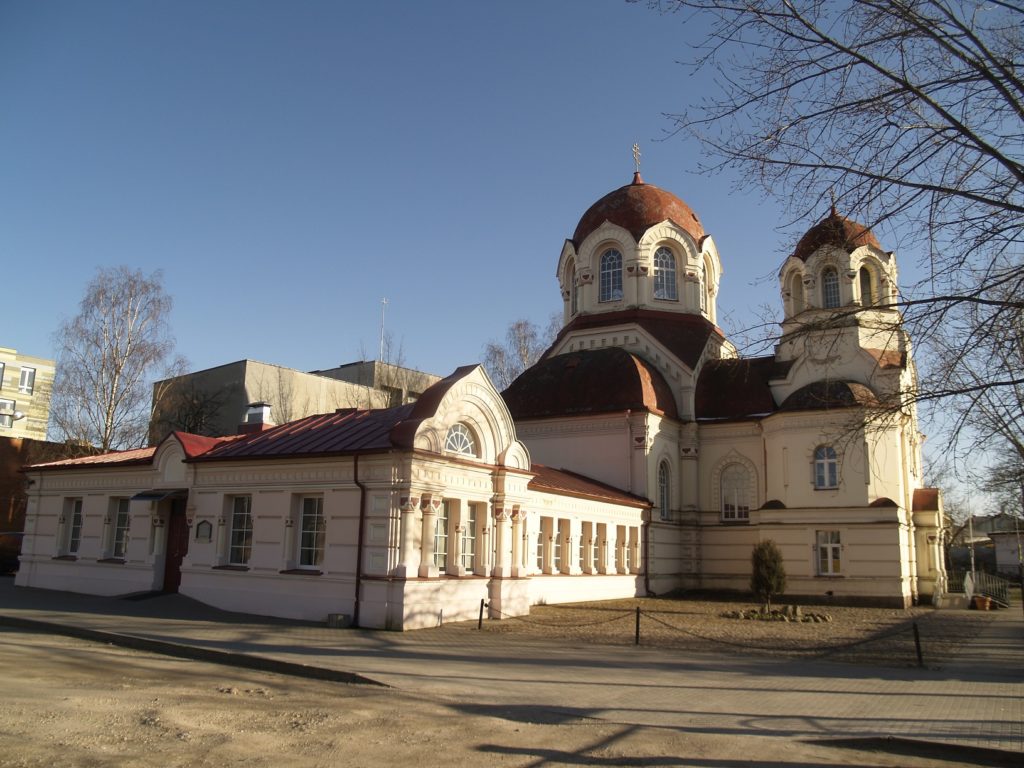
This Russian Orthodox Church of St.Michael the Archangel (Kalvarijų St.65, Vilnius) was built in 1893 – 1895.
It was consecrated on September 3, 1895. St. Michael’s Church was erected on the donations of all Orthodox Vilnians.
September 16, 1995 St. Michael’s Church celebrated its centenary.
RUSSIAN ORTHODOX CHURCH of ST.CATHERINE the GREAT MARTYR

The construction of an Orthodox church in the name of St. Catherine the Great Martyr (Moniuškos St.58, Vilnius) is located on the high bank of the Neris River, at the crossroads of Moniškos and Birutes streets.
The church is directly related to the Potapov couple. St. Catherine is the heavenly patroness of Catherine Vasilyevna Potapova.
On December 7, 2013, on the feast day of St. Catherine the Great Martyr, the first Liturgy was held in the church, led by the Archbishop Innocent of Vilna and Lithuania.
With his blessing, from that time on, the priest Alexander Matskevich was the rector of the church.
The MARY MAGDALENE MONASTERY
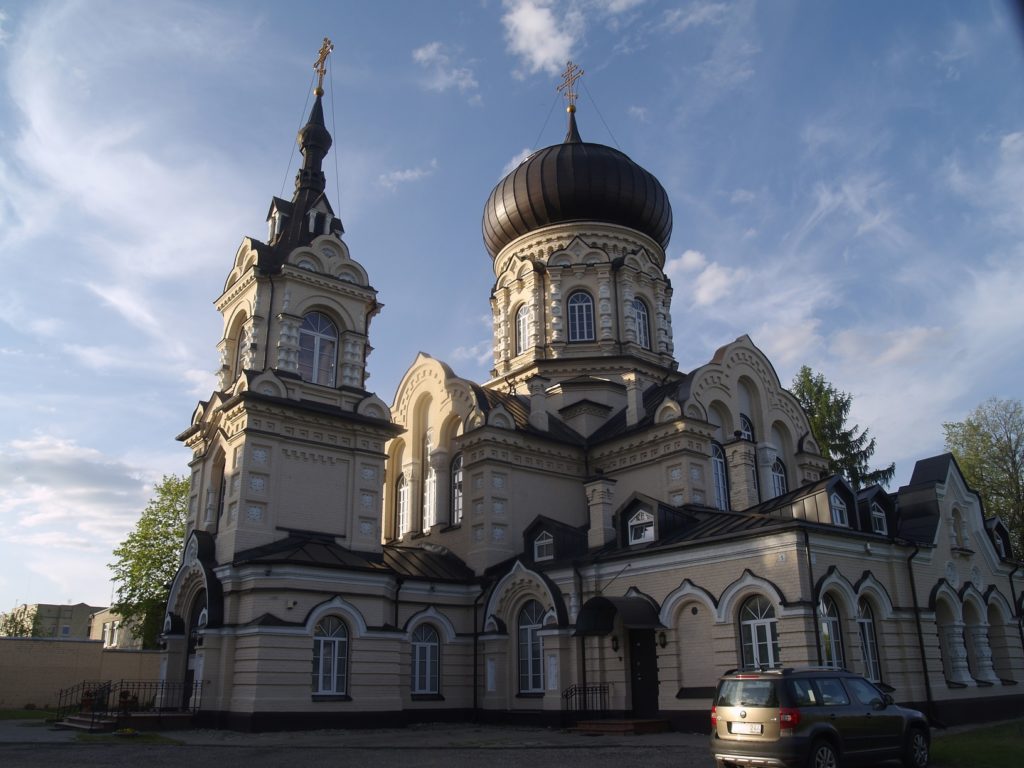
The Mary Magdalene Monastery (Lenkų str.1, Vilnius) is the only female Orthodox monastery in the Vilnius and Lithuanian dioceses of the Russian Orthodox Church.

